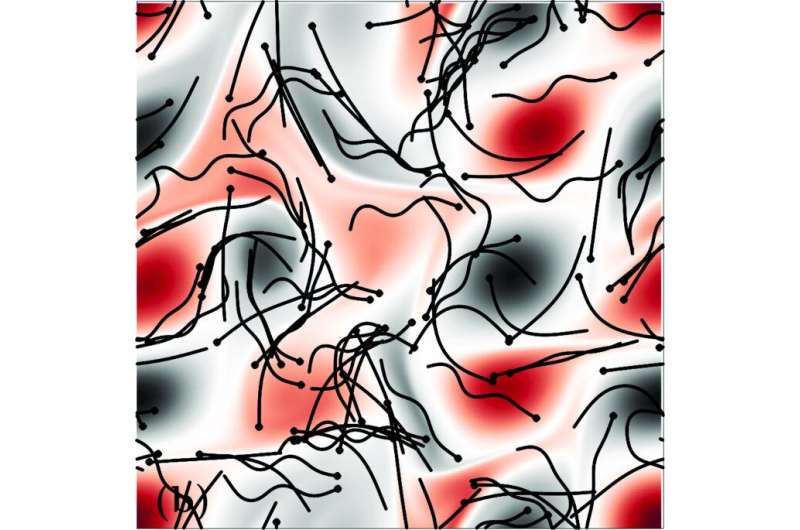This article has been reviewed according to Science X's editorial process and policies. Editors have highlighted the following attributes while ensuring the content's credibility:
fact-checked
peer-reviewed publication
trusted source
proofread
Steering undulatory micro-swimmers in a fluid flow through reinforcement learning

New research looks at navigation strategies for deformable micro-swimmers in a viscous fluid faced with drifts, strains, and other deformations.
A deformable micro-swimmer is a small-scale organism or artificial structure that uses sinusoidal body undulations to propel itself through a fluid environment.
The term applies to organisms like bacteria which navigate through fluids using whip-like tails called flagella, sperm cells propelling themselves through the female reproductive system, and even nematodes, tiny worms that move through water or soil with undulations.
Micro-swimmers can also describe tiny micro-robots constructed from soft-materials designed to respond to stimuli and perform tasks like drug delivery on a micro-scale.
That means the study of micro-swimmers has applications in a vast array of scientific fields, from biology to fundamental physics to nanorobotics.
In a new paper by Jérémie Bec, a researcher at CNRS and Center Inria d'Université Côte d'Azur and his colleagues attempt to find an optimal navigation policy for micro-swimmers, crucial for enhancing their performance, functionality, and versatility for applications such as targeted drug delivery. The research is published in The European Physical Journal E.
"Finding an optimal navigation policy for micro-swimmers is crucial for enhancing their performance, functionality, and versatility in the mentioned applications," Bec says. "By determining an optimal navigation policy, micro-swimmers can effectively adapt and respond to changes in the fluid environment. This enables them to navigate through obstacles, avoid hazards, and exploit flow patterns for improved locomotion.
"An optimal navigation policy ensures their ability to maneuver and explore their surroundings efficiently," Bec adds.
The researcher explains that further to this, an optimal navigation policy guarantees robust performance across different conditions and variations as they undulate through a fluid environment.
Bec says that the team was particularly intrigued by the notable level of variability in the performance of the machine-learning strategies they employed. The unexpected variability in performance granted the team valuable insights and allowed them to identify optimal strategies that surpassed their initial expectations.
"We gained a deeper understanding of the complex dynamics involved in optimizing navigation policies for micro-swimmers," Bec concludes. "These findings underscore the importance of exploring beyond conventional expectations and embracing the potential for variability and unpredictability in artificial intelligence."
More information: Zakarya El Khiyati et al, Steering undulatory micro-swimmers in a fluid flow through reinforcement learning, The European Physical Journal E (2023). DOI: 10.1140/epje/s10189-023-00293-8
Journal information: European Physical Journal E
Provided by Springer



















